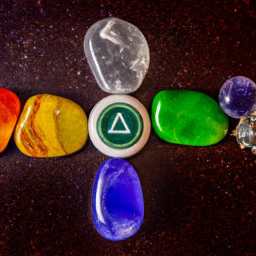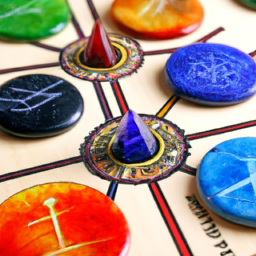: Harmonizing Your Inner and Outer Energies

Vastu Shastra, an ancient Indian architectural science, emphasizes the importance of creating harmony and balance in our living spaces. It draws upon the principles of aligning the energies of nature and the universe to create a positive flow of energy in our surroundings. In recent times, the concept of Vastu has extended beyond just architecture and has incorporated various other aspects, including Chakra balancing.
Chakras, the energy centers in our body, are derived from the Sanskrit word “cakra” which means wheel. These energy wheels are responsible for maintaining our physical, emotional, and spiritual well-being. When the chakras are blocked or out of balance, we may experience physical and emotional imbalances in our lives. This is where Chakra balancing Vastu comes into play, by combining the principles of both Vastu and Chakras to create a harmonious living space that promotes overall wellness.
Background photo created by katemangostar – www.freepik.com
The practice of Chakra balancing Vastu involves understanding the location and functioning of the seven main chakras in our body and aligning them with the corresponding direction in our living environment. Let’s dive deeper into how each chakra is connected to Vastu principles and how we can balance them for a more positive and vibrant living space.
1. Root Chakra (Muladhara): Located at the base of the spine, this chakra is associated with our sense of security and stability. In Vastu, it is connected to the southwest direction, representing stability and grounding. To balance this chakra, it is recommended to have a strong and steady foundation in the southwest direction of your home, such as placing heavy furniture or a rock garden.
2. Sacral Chakra (Svadhishthana): Located in the lower abdomen, this chakra is linked to our emotions and creativity. In Vastu, it corresponds to the west direction, representing joy and passion. To balance this chakra, it is recommended to have a designated space for creative activities or artwork in the west direction of your home.
3. Solar Plexus Chakra (Manipura): Located above the navel, this chakra governs our self-confidence, willpower, and personal growth. In Vastu, it is connected to the southeast direction, representing fire and transformation. To balance this chakra, it is recommended to have a source of natural light, such as a window or skylights, in the southeast direction of your home.
4. Heart Chakra (Anahata): Located at the center of the chest, this chakra represents love, compassion, and relationships. In Vastu, it corresponds to the north direction, representing abundance and prosperity. To balance this chakra, it is recommended to have a healthy and clutter-free kitchen in the north direction, as it is considered the heart of the home.
5. Throat Chakra (Vishuddha): Located in the throat, this chakra is associated with communication, self-expression, and creativity. In Vastu, it is connected to the northeast direction, representing spirituality and higher consciousness. To balance this chakra, it is recommended to have a meditation or prayer space in the northeast direction of your home.
6. Third Eye Chakra (Ajna): Located between the eyebrows, this chakra governs our intuition, perception, and wisdom. In Vastu, it corresponds to the east direction, representing new beginnings and growth. To balance this chakra, it is recommended to have a study area or a thought-provoking piece of artwork in the east direction of your home.
7. Crown Chakra (Sahasrara): Located at the top of the head, this chakra is associated with spiritual enlightenment, higher consciousness, and connection to the divine. In Vastu, it is connected to the center of the home, representing balance and harmony. To balance this chakra, it is recommended to have a central space for gathering, such as a living room, in the center of your home.
While incorporating these Vastu principles in our living spaces can help in balancing our chakras, it is also important to maintain a clutter-free and well-organized home. Clutter or disorganization can disrupt the flow of energy and hinder the balancing process.
In addition to Vastu principles, other practices such as meditation, yoga, and using essential oils can also aid in chakra balancing. By creating a harmonious and balanced living space, we can enhance our overall well-being and lead a more fulfilling and meaningful life.
In conclusion, Chakra balancing Vastu is a holistic approach that combines the principles of Vastu and Chakras to create a harmonious living space that promotes physical, emotional, and spiritual well-being. By understanding the connection between our chakras and our living environment, we can create a positive and vibrant energy flow in our lives. So, let’s open our minds and hearts to the ancient wisdom of Vastu Shastra and bring balance and harmony into our homes and lives.





Invaluable insight into energy healing and balancing
This is an amazing post, providing great information on how to optimize the energy flow in our lives with chakra balancing and Vastu. #energyhealing #vastu #chakrabalancing
Interesting read with practical steps to follow!